Abstract
1. The variability of discharge of thirty-nine muscle spindle afferents from the pretibial muscles of normal human subjects was determined for spike train sequences recorded with the ankle joint fixed in 25 degrees plantar flexion, during further stretch and during graded voluntary contractions of the receptor-bearing muscle. 2. In non-contracting muscles with the ankle joint in 25 degrees plantar flexion, a sustained discharge was maintained by twenty-four of the thirty-nine endings. The mean discharge frequency for the active endings was 11.1 Hz (range 4.8--22.1 Hz), the mean coefficient of variation 0.073 (range 0.021--0.183). With further stretch, the discharge of endings maintaining frequencies below 10--12 Hz became more regular. For endings maintaining higher frequencies, changes in the coefficient of variation were small and occurred in either direction. All secondary endings maintained a highly regular discharge, but, at these frequencies, there was no statistically significant difference in the variability of primary and secondary endings. 3. It is considered that these findings are comparable to those of Matthews & Stein (1969) for de-efferented feline spindle endings, and support the view that there is no functionally effective background fusimotor drive to non-contracting muscles of normal human subjects. 4. A voluntary contraction sufficient to accelerate a spindle ending invariably decreased the regularity of its afferent discharge. During voluntary contractions, coefficients of variation up to 0.345 were recorded. However, coefficients as low as 0.1 were not uncommon, and thus the absence of fusimotor drive cannot necessarily be inferred from a regular afferent discharge pattern. 5. With contractions of different strength, the increase in the coefficient of variation did not parallel the increase in discharge frequency. It is concluded that not all fusimotor influences acting on a spindle ending are translated into variability, and that measurements of the variability of discharge do not accurately reflect the level of fusimotor drive. 6. The discharge frequency of some spindle endings decreased slightly in some contractions and this was accompanied by an increase in the variability of discharge. It is suggested that contracting extrafusal muscle fibres can modulate the discharge pattern of spindle endings and contribute to the variability of discharge during a voluntary contraction. 7. In contracting muscles the irregular fusimotor-driven spindle discharge contained a 'hidden' periodicity, but this was not as extensive as has been reported for the cat. No such periodicity could be demonstrated for spindle endings in non-contracting human muscles.
Full text
PDF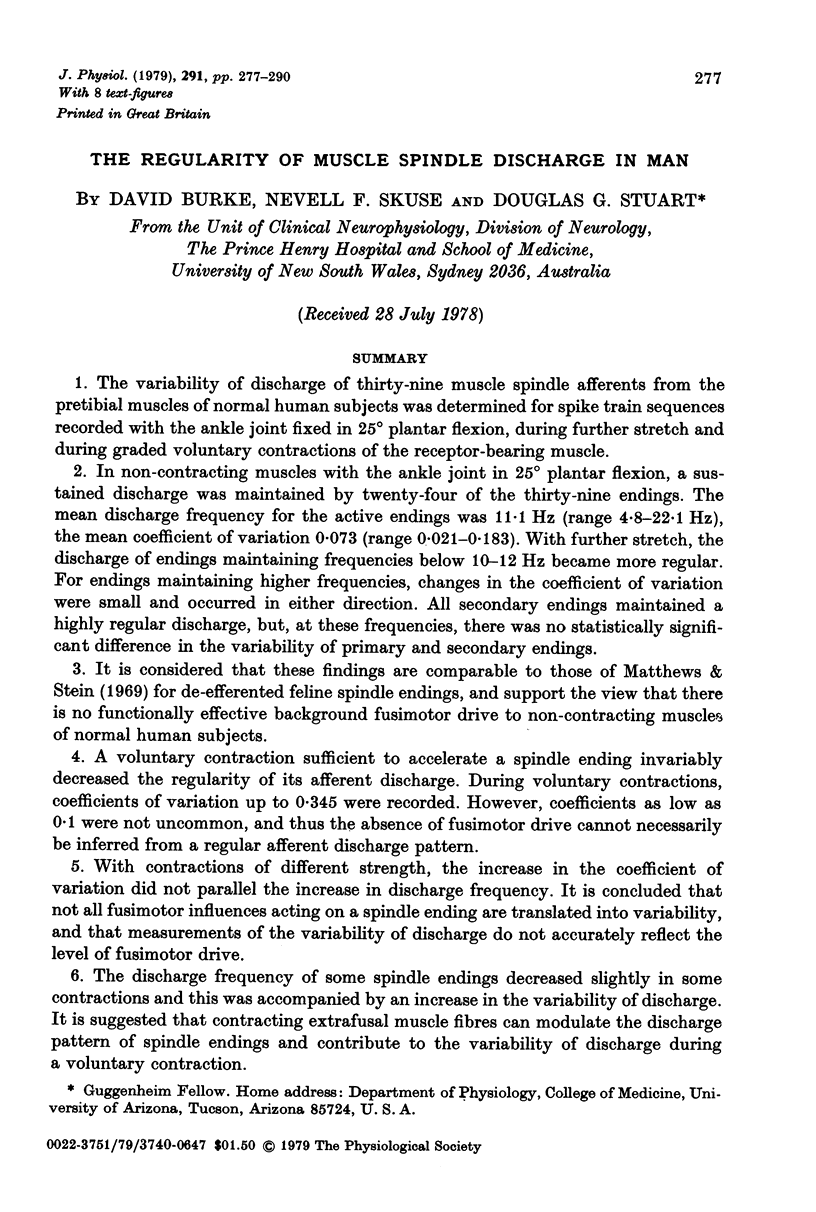
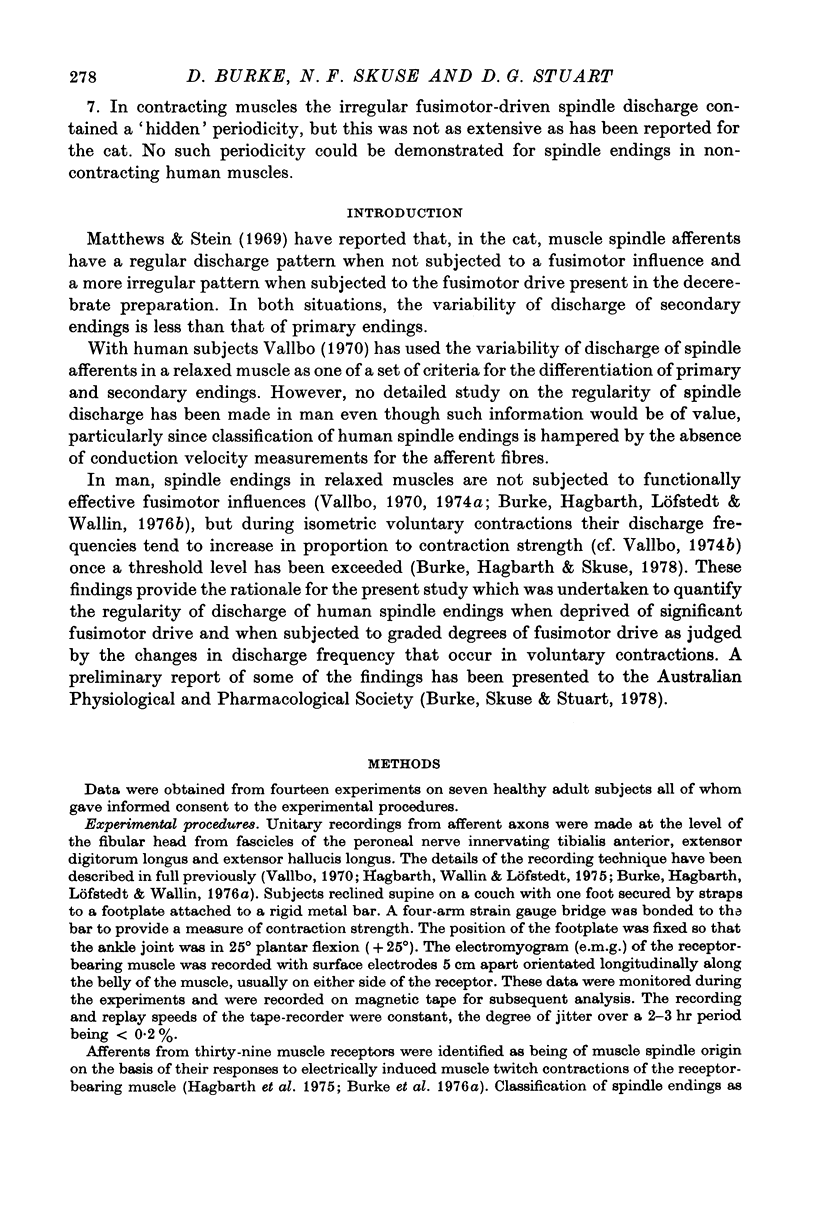
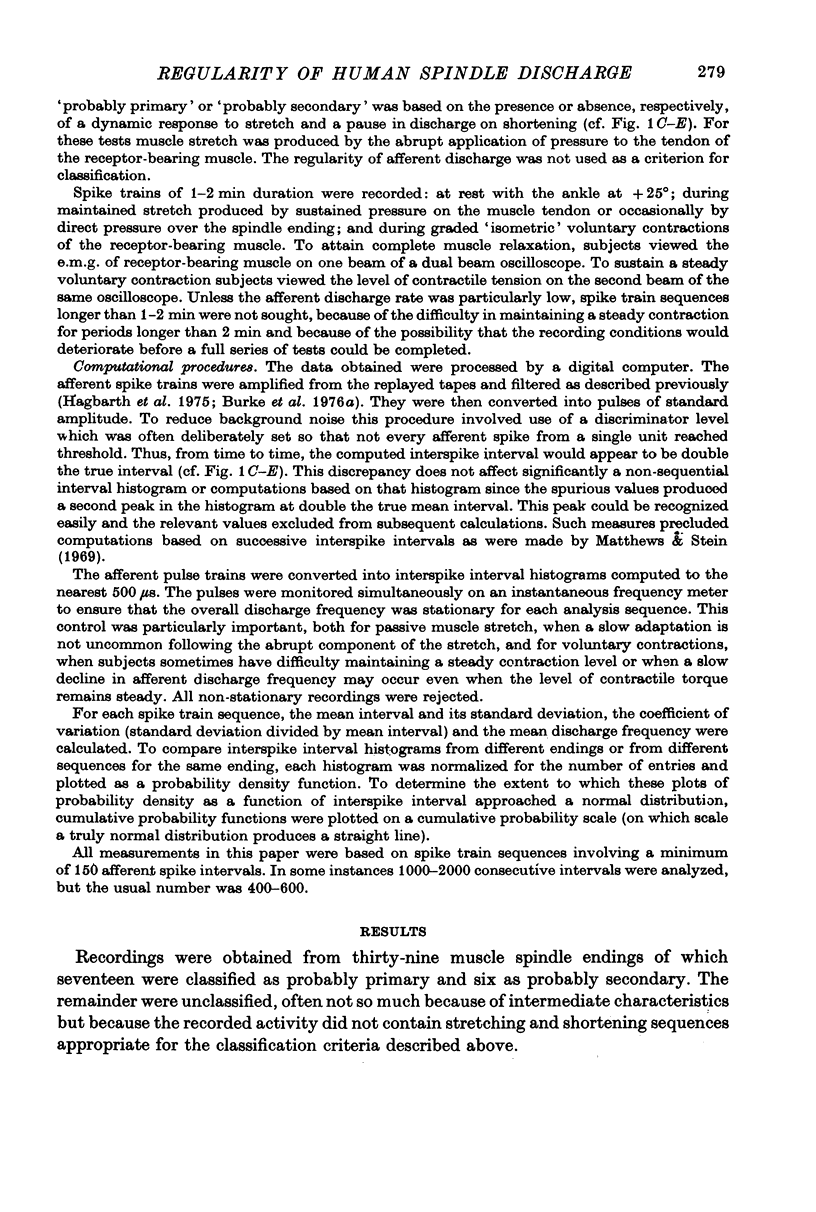
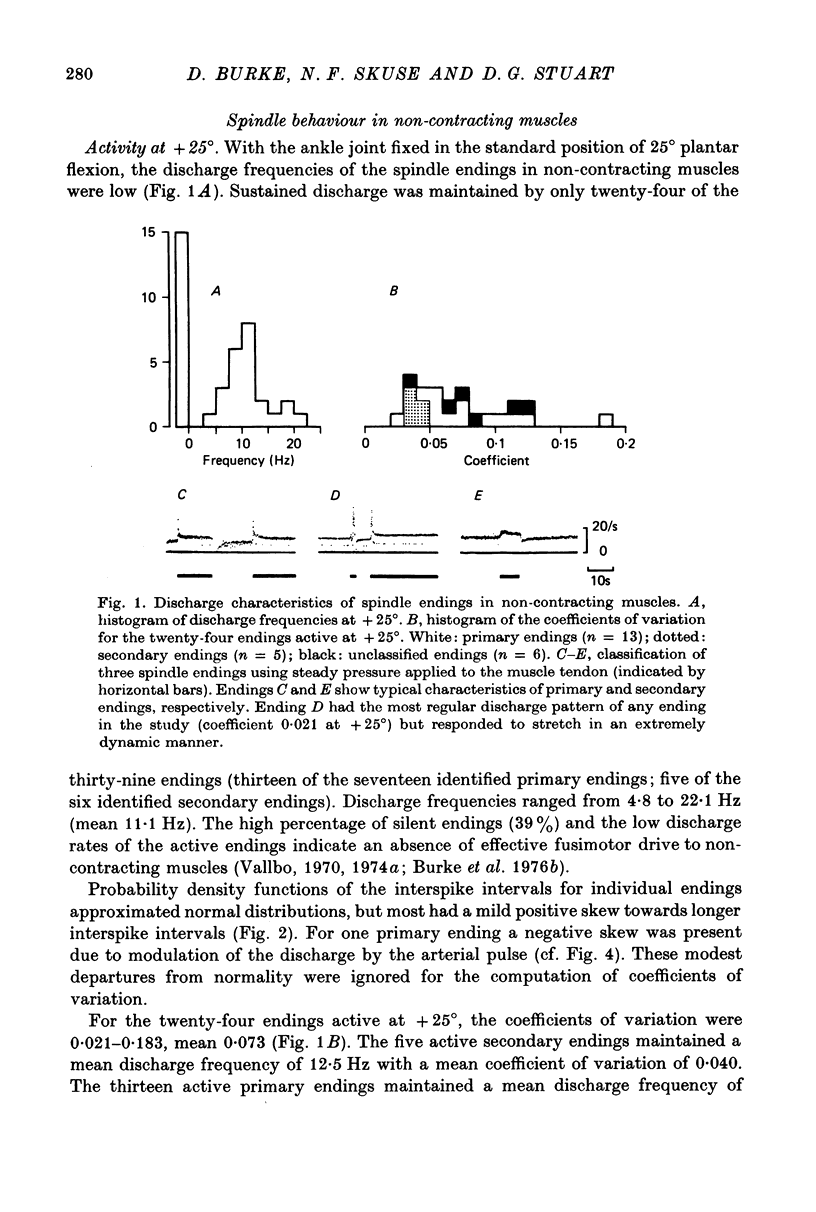

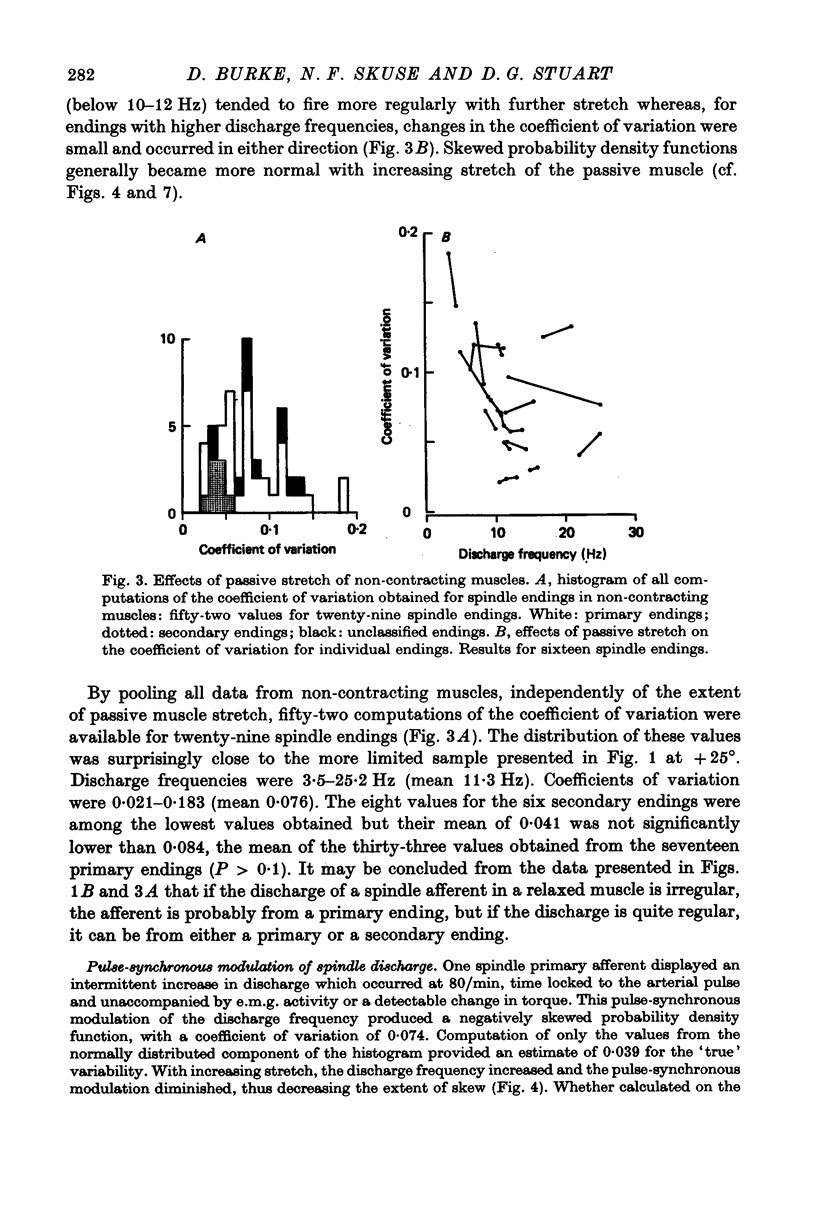
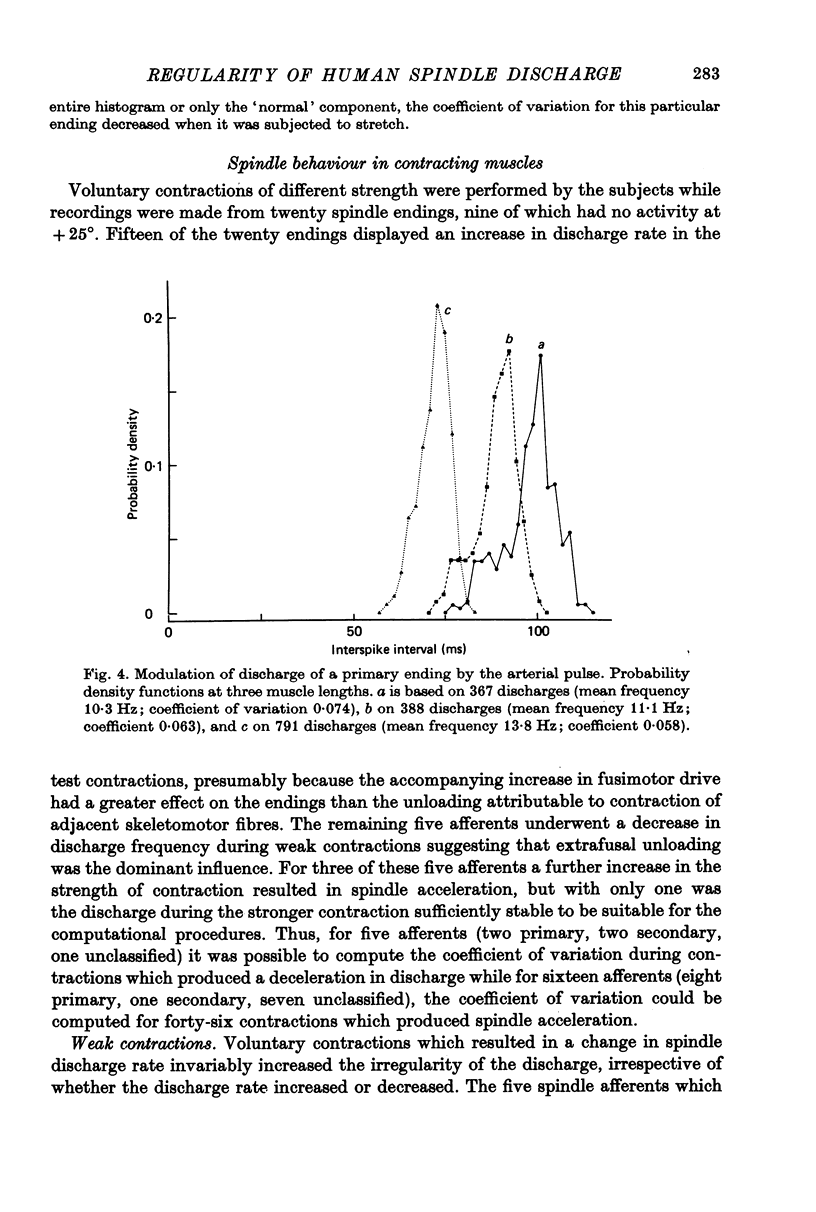
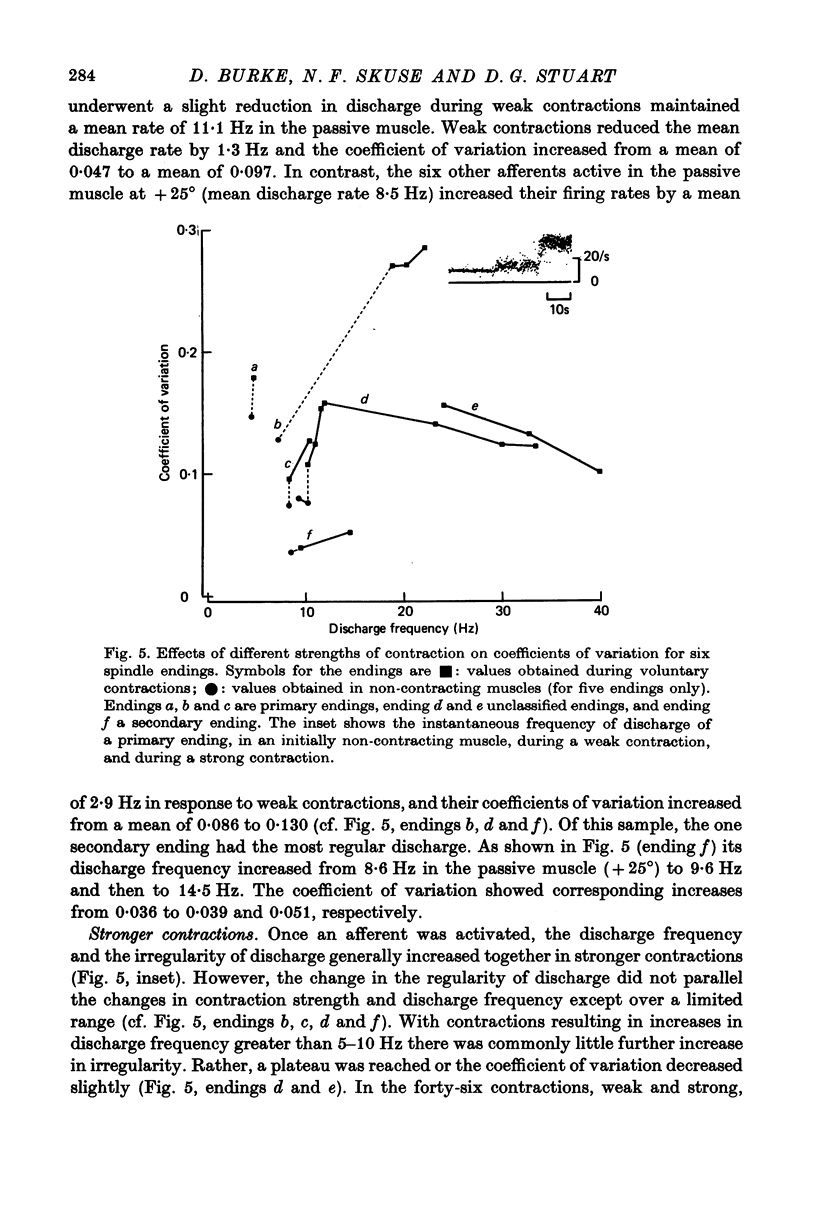
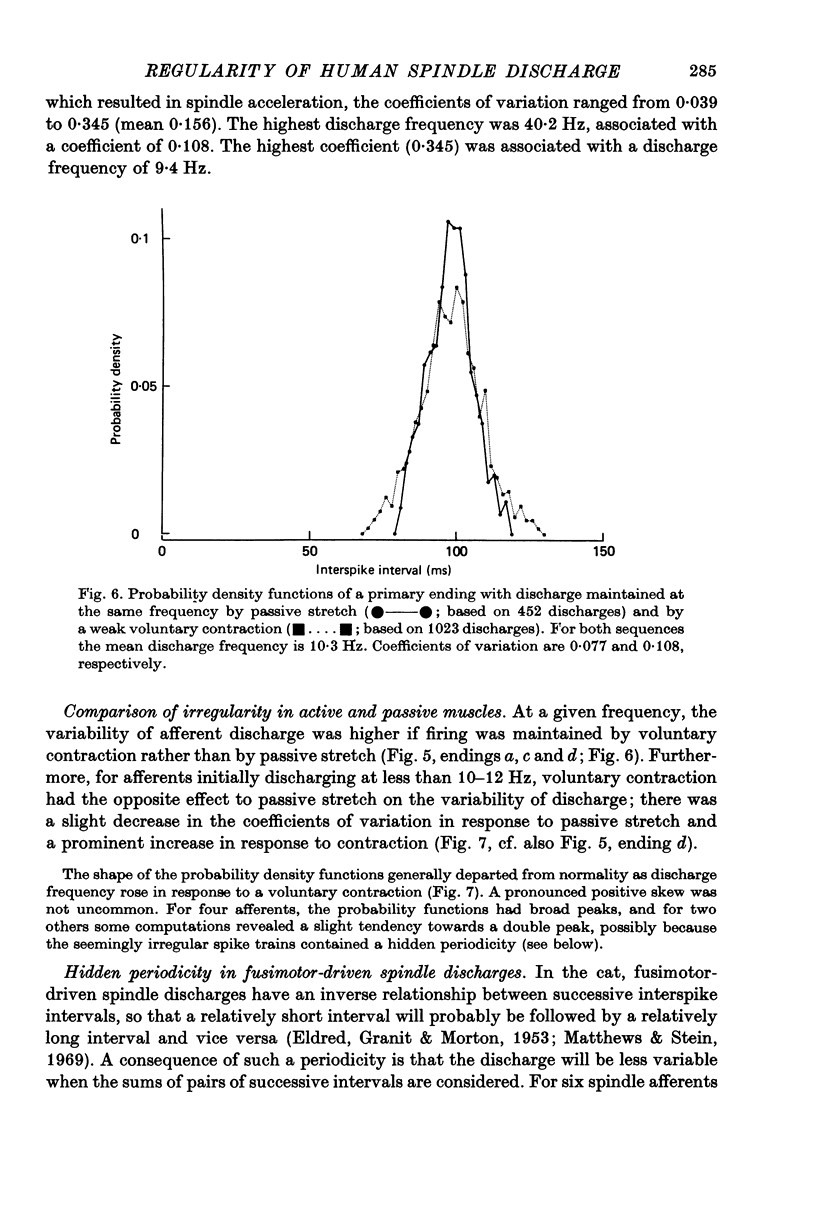
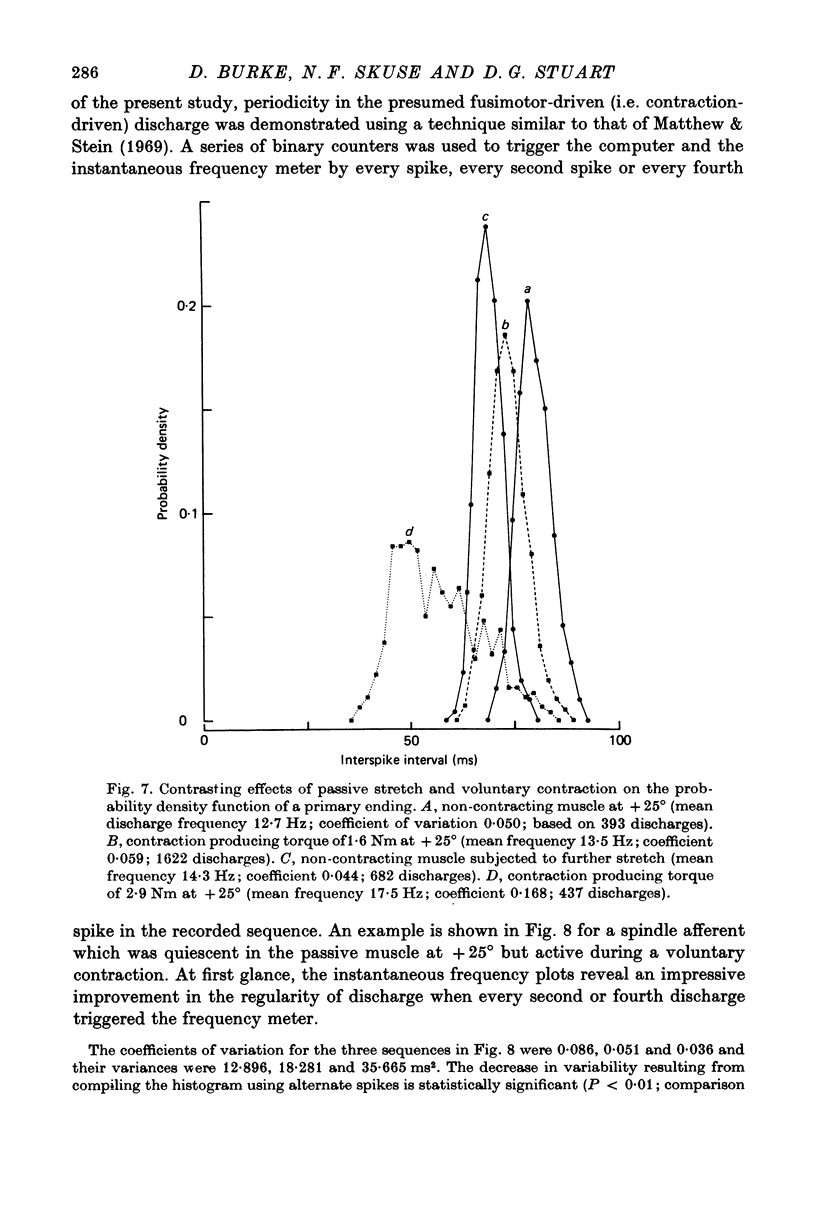
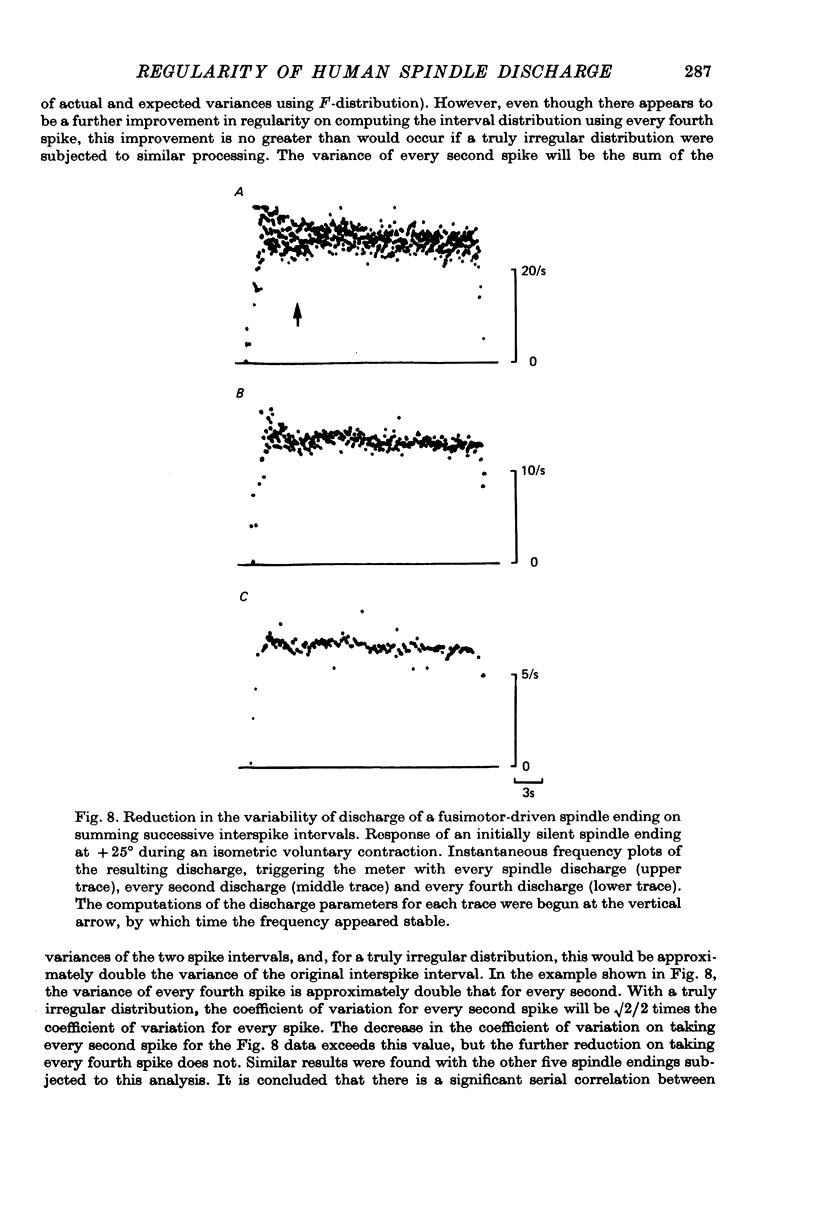
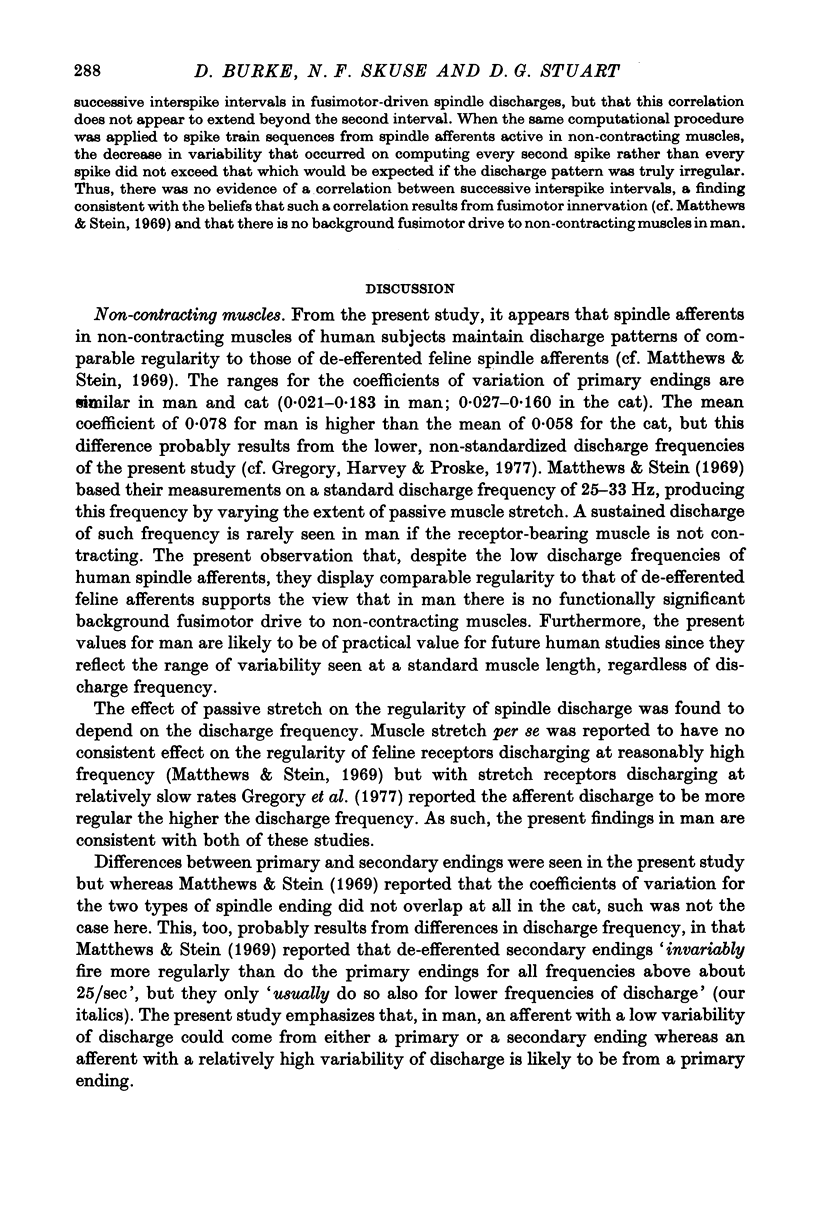
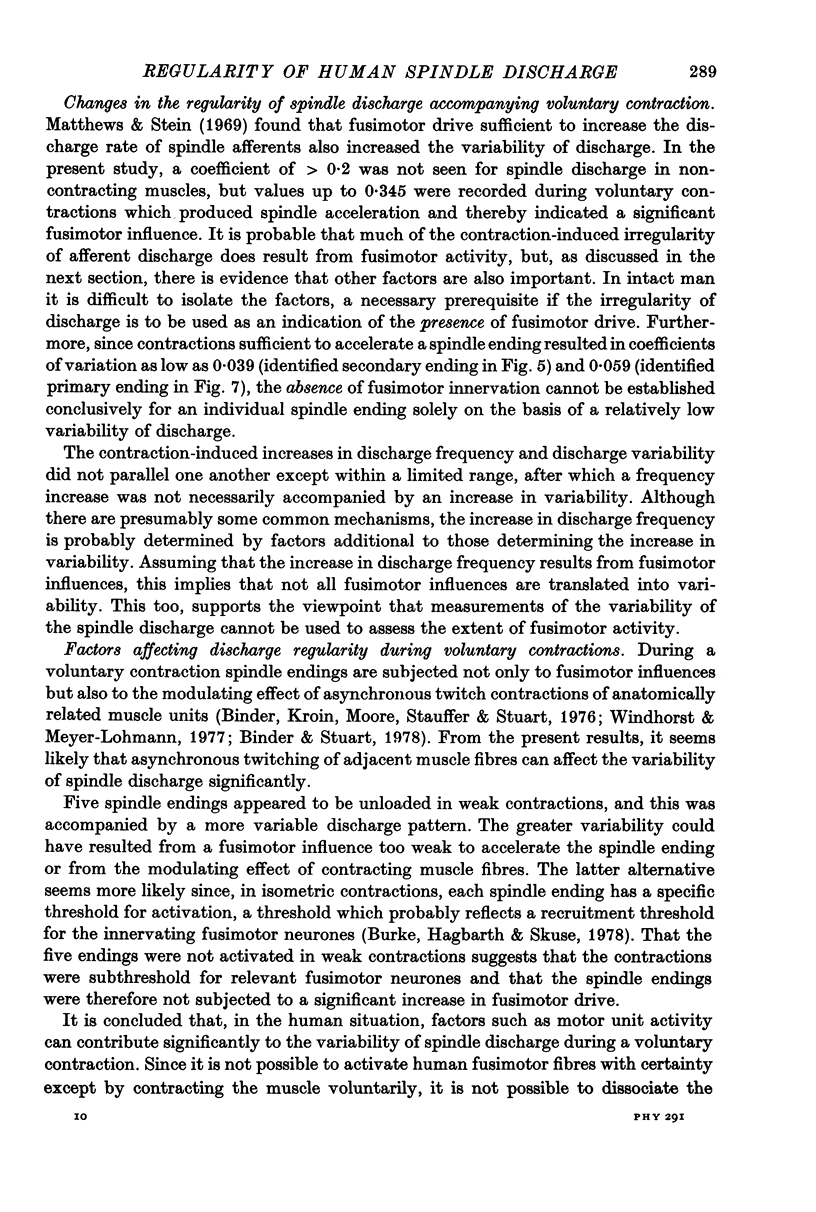
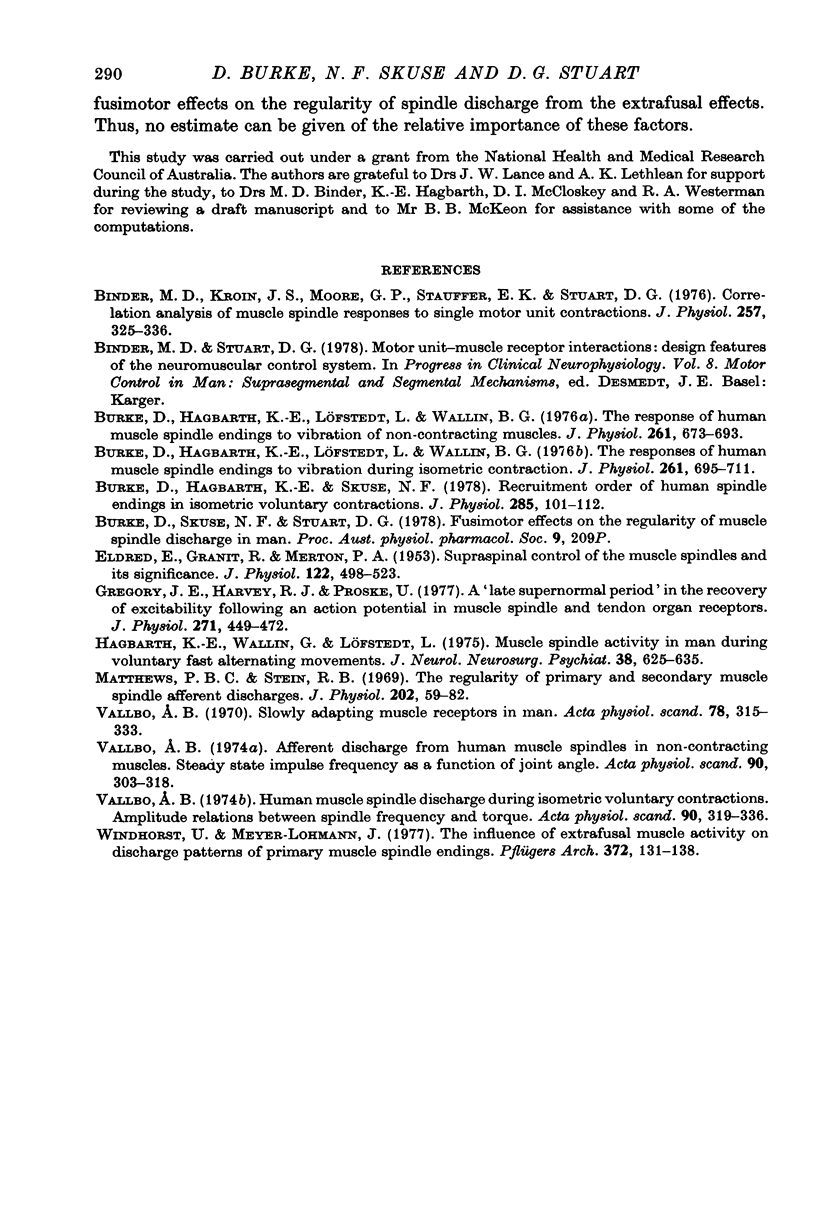
Selected References
These references are in PubMed. This may not be the complete list of references from this article.
- Binder M. D., Kroin J. S., Moore G. P., Stauffer E. K., Stuart D. G. Correlation analysis of muscle spindle responses to single motor unit contractions. J Physiol. 1976 May;257(2):325–336. doi: 10.1113/jphysiol.1976.sp011371. [DOI] [PMC free article] [PubMed] [Google Scholar]
- Burke D., Hagbarth K. E., Löfstedt L., Wallin B. G. The responses of human muscle spindle endings to vibration during isometric contraction. J Physiol. 1976 Oct;261(3):695–711. doi: 10.1113/jphysiol.1976.sp011581. [DOI] [PMC free article] [PubMed] [Google Scholar]
- Burke D., Hagbarth K. E., Löfstedt L., Wallin B. G. The responses of human muscle spindle endings to vibration of non-contracting muscles. J Physiol. 1976 Oct;261(3):673–693. doi: 10.1113/jphysiol.1976.sp011580. [DOI] [PMC free article] [PubMed] [Google Scholar]
- Burke D., Hagbarth K. E., Skuse N. F. Recruitment order of human spindle endings in isometric voluntary contractions. J Physiol. 1978 Dec;285:101–112. doi: 10.1113/jphysiol.1978.sp012560. [DOI] [PMC free article] [PubMed] [Google Scholar]
- ELDRED E., GRANIT R., MERTON P. A. Supraspinal control of the muscle spindles and its significance. J Physiol. 1953 Dec 29;122(3):498–523. doi: 10.1113/jphysiol.1953.sp005017. [DOI] [PMC free article] [PubMed] [Google Scholar]
- Gregory J. E., Harvey R. J., Proske U. A 'late supernormal period' in the recovery of excitability following an action potential in muscle spindle and tendon organ receptors. J Physiol. 1977 Oct;271(2):449–472. doi: 10.1113/jphysiol.1977.sp012008. [DOI] [PMC free article] [PubMed] [Google Scholar]
- Hagbarth K. E., Wallen G., Löfstedt L. Muscle spindle activity in man during voluntary fast alternating movements. J Neurol Neurosurg Psychiatry. 1975 Jul;38(7):625–635. doi: 10.1136/jnnp.38.7.625. [DOI] [PMC free article] [PubMed] [Google Scholar]
- Matthews P. B., Stein R. B. The regularity of primary and secondary muscle spindle afferent discharges. J Physiol. 1969 May;202(1):59–82. doi: 10.1113/jphysiol.1969.sp008795. [DOI] [PMC free article] [PubMed] [Google Scholar]
- Vallbo A. B. Afferent discharge from human muscle spindles in non-contracting muscles. Steady state impulse frequency as a function of joint angle. Acta Physiol Scand. 1974 Feb;90(2):303–318. doi: 10.1111/j.1748-1716.1974.tb05593.x. [DOI] [PubMed] [Google Scholar]
- Vallbo A. B. Human muscle spindle discharge during isometric voluntary contractions. Amplitude relations between spindle frequency and torque. Acta Physiol Scand. 1974 Feb;90(2):319–336. doi: 10.1111/j.1748-1716.1974.tb05594.x. [DOI] [PubMed] [Google Scholar]
- Vallbo A. B. Slowly adapting muscle receptors in man. Acta Physiol Scand. 1970 Mar;78(3):315–333. doi: 10.1111/j.1748-1716.1970.tb04667.x. [DOI] [PubMed] [Google Scholar]
- Windhorst U., Meyer-Lohmann J. The influence of extrafusal muscle activity on discharge patterns of primary muscle spindle endings. Pflugers Arch. 1977 Dec 12;372(2):131–138. doi: 10.1007/BF00585326. [DOI] [PubMed] [Google Scholar]


